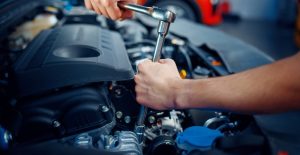Thinking about taking home a Taycan? Financing an electric performance car brings a few twists compared to traditional ICE models. Here are ten EV-specific insights to help you structure a smart, flexible deal for Porsche’s flagship EV.
1. Map incentives to your deal structure
EV incentives can be federal, state, utility, or even local. Some are point-of-sale rebates; others arrive as tax credits or post-purchase checks. Know which incentives apply to you and whether they hinge on income caps, MSRP thresholds, or vehicle eligibility. Structure the purchase price and timing so you don’t inadvertently disqualify yourself.
2. Consider longer terms—but align with tech cycles
EV tech evolves quickly. Longer terms can unlock comfortable payments on a high-MSRP Taycan, but balance that against faster feature turnover (battery chemistries, range upgrades, charging speeds). A slightly shorter term—or a balloon/step-up structure—can keep options open when the next battery or hardware refresh drops.
3. Evaluate total cost of ownership, not just APR
Electricity vs. fuel, routine maintenance (usually lower for EVs), tires (high-performance rubber isn’t cheap), and potential home charging costs all influence affordability. When comparing loans, model your home charging install, peak electricity rates, and road-trip fast charging into monthly ownership—not just the payment.
4. Home charger financing matters
A Level 2 charger and electrical panel upgrades can run from modest to meaningful. Ask whether you can roll these costs into your auto loan, or secure a parallel low-rate personal/green-energy loan. Bundling infrastructure into your plan can preserve cash and ensure you actually leverage at-home charging from day one.
5. Mind depreciation and resale timing
EV depreciation curves can hinge on battery health and software-enabled features. Taycan residuals are influenced by range updates, charging improvements, and model-year refreshes. If you plan to exit early, anticipate the strongest resale windows (e.g., before a major facelift) and avoid overspending on highly niche options that may not retain value.
6. Battery health is a financing input
For pre-owned or CPO Taycans, obtain battery health documentation (capacity reports, fast-charge behavior, thermal management history). Lenders and appraisers increasingly weigh battery condition in valuation. Healthy packs support stronger LTVs, better terms, and more predictable exit options.
7. Insurance, GAP, and replacement coverage
Performance EV repair costs and advanced components can lift premiums. Get quotes before you finalize your payment target. GAP coverage (or new car replacement) can be a smart add, particularly with larger down payments or longer terms, helping protect against early-term depreciation shocks.
8. Charging network strategy affects costs
If most of your charging is at home or work, your operating cost can be very stable. If you rely on public fast charging, price variability and idle fees can add up. This doesn’t change your loan math directly, but it does impact your monthly cash flow cushion. Model a realistic mix (e.g., 80% home, 20% public) to avoid surprises
9. Business use and write-offs (talk to your pro)
If you’ll use the Taycan for business, discuss with your tax professional how to document mileage, allocate expenses, and treat charging reimbursements. The right ownership structure (personal vs. business), plus careful record-keeping, can improve after-tax cost—without overcomplicating your financing.
10. Keep software and warranty timelines aligned
EVs are as much software as hardware. Confirm how long major software updates and connected services are included, what extended coverage costs, and how warranty timelines align with your loan term. For pre-owned, check the balance of battery and powertrain warranties; aligning those milestones with your planned term can reduce risk.
Start by defining your ownership horizon (e.g., 36 vs. 60+ months), estimate your true monthly ownership cost (payment + insurance + charging + tires + any charger loan), and pressure-test resale scenarios at different exit points. Then, shop terms that match your comfort with technology updates and depreciation. A clean, well-documented Taycan with strong battery health, right-sized options, and a home charging plan typically supports better long-term value.
Finally, compare lenders that understand high-end EVs and can accommodate unique needs (charger bundling, balloon structures, or flexible prepayment). With a thoughtful approach to Porsche finance, you’ll preserve cash flow today while staying agile for the next leap in performance EV tech.






More Stories
Why BMW Is the Go-To for Classy Yet Sporty Event Transport
Discover Top Car Dealerships in Roseville, CA: Your Guide to New & Used Cars, Certified Pre-Owned Vehicles, and Auto Financing
How to Identify and Fix an Engine Misfire